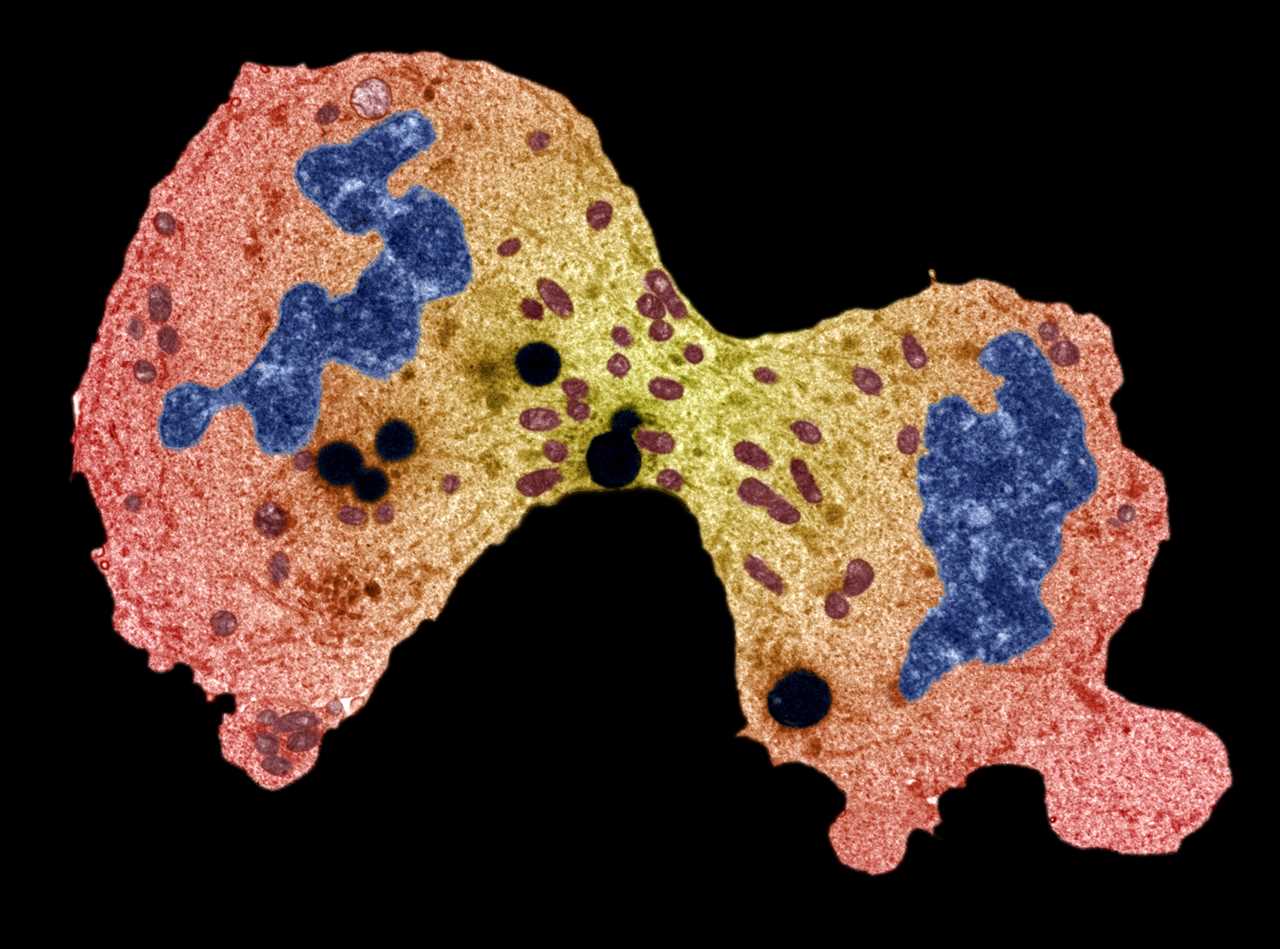SARCOMAS are a cancer that develop in any part of the body.
They are an uncommon disease and can strike inside or outside, including your muscles, bones, tendons, blood vessels and fatty tissues.

In the UK around 15 people are diagnosed with the illness each day – equating to 5,300 people each year.
Sarcoma UK says there are around 100 different subtypes of the cancer.
Your treatment will depend on the type of sarcoma you have and these can be grouped into soft tissue and bone sarcomas.
Here we take a look at some of the subtypes and how they develop.
Angiosarcoma
This develops from the cells that make up the walls of blood vessels. It can occur anywhere but it’s most common in the skin, breast, liver and spleen. It can also be found in the face and scalp.
Bone Sarcoma
This starts in the bone but is extremely rare, with Sarcoma UK stating that it makes up just 0.2 per cent of all cancer diagnosis in England.
Chondrosarcoma
Experts at Sarcoma UK explain: “Chondrosarcoma is a bone sarcoma that develops in the cartilage cells. It mostly affects adults above the age of 40 and the most common sites are the upper arm, pelvis and thigh bone.
“Chondrosarcomas make up 37 per cent of all bone sarcoma diagnosis.”
Chordoma
This makes up six per cent of all bone sarcoma diagnoses and most commonly affects adults in their 40s and 50s.
Desmoid-type fibromatosis
This is a rare type of benign tumour, but patients are treated by specialists oncologists.
Ewing’s sarcoma
Ewing sarcoma, or ewing’s sarcoma, is a rare type of cancer that affects bones or the tissue around bones.
It’s more common in males and mainly affects children and young people aged from 10 to 20.
The main areas affected by Ewing’s sarcoma are the legs (around the knees), pelvis, arms, ribs and spine.
As the condition is so rare and can often require complicated treatment, you may be referred to a specialist team for your care.
Symptoms include bone pain, which may get worse over time and at night, a tender lump or swelling and a high temperature that doesn’t go away.
Sufferers may also feel tired all the time and experience weight loss.
As bones tend to be weaker, they are susceptible to breakage, with many people being diagnosed after a fracture.
Fibrosarcoma
This develops in the fibrous tissues in the body.
It’s most commonly found in the limbs and the skin.
Gastrointestinal stromal tumour (GIST)
Experts explain: “The GI tract is a long tube running through the body from the oesophagus (gullet) to the anus (back passage), and includes the stomach and intestines.
“Every year, around 900 people in the UK are diagnosed with GIST. It most commonly affects people between the age of 55 and 65. GISTs are very rare in children and young people.”
There are many other types of the illness, including:
- Giant cell tumour of the bone
- Gynaecological sarcoma
- Kaposi’s sarcoma
- Leiomyosarcoma
- Liposarcoma
- Malignant peripheral nerve sheath tumour
- Malignant peripheral nerve sheath tumour
- Osteosarcoma
- Retroperitoneal sarcoma
- Rhabdomyoscarcoma
- Soft tissue sarcoma
- Synovial sarcoma
What cause sarcoma and what are the symptoms?
Medics don’t fully understand why sarcomas happen and more research still needs to be done.
The main symptoms include:
- a lump which is growing, changing, or bigger than a golf ball
- swelling, tenderness or pain in or around the bone which may come and go and may be worse at night
- stomach pain, feeling sick, loss of appetite or feeling full after eating only a small amount of food
- blood in either your poo or vomit
Sarcoma can be treated and many people will have tumours removed with surgery.
Did you miss our previous article...
https://trendinginthenews.com/cancer/deborah-james-touching-moment-dame-amp-her-family-celebrate-fundraising-milestone-together-during-her-final-days






